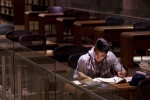River at bay
It is hard to imagine that children used to bathe in the river. Even harder to think that people drank river water that flowed like mountain spring.
Today, to drink any drop of water from the Pasig River could be a fatal act. With so much historical significance that includes being a key channel of early trade, recreation and fishing livelihood, and the barangays that thrived alongside it (even once harboring nationalists such as Bonifacio’s Katipuneros), the river has been called a lot of names.
Running from Laguna de Bay to Manila Bay, the Pasig River has been called the river toilet while the Manila Bay the biggest natural septic tank. Pronounced as biologically dead as early as the 1990s, it can only sustain water lilies and the hardworking unseen murky operator, which is the janitor fish. This was God’s river, now manmade.
A number of presidential decrees and orders from the time of President Marcos in the 1970s to the present mandating the restoration of the river have so far only shown that bringing back the river near the form of how God created it is mission impossible. This aspirational image was never the unrealistic objective of the primary commission tasked to nurse back the sick river to health. It is only wished that it is able to sustain fish life and becomes an alternative means to decongest land traffic in the Metro and ultimately become a tourism venue.
No credit can be taken away from all the private effort and official work invested so far. The most impactful activity so far was the dredging of the river to improve its flow. But when a government official proclaims that the Pasig River is now clean, he probably has not walked alongside it.
The water remains black, and the stench still pervades, intensified by the summer that lowers the water level in the river such that the smell of the murky substance underneath becomes uncorked. It boggles the mind a bit that this is the area that informal settlers fought for, and that some of them died for, to be able to remain as residents here.
From a top view, the Pasig River is like a large vein and connected to its sides are like various spider veins (small rivers or tributaries) coming from other localities such as San Juan, Marikina, and Taguig-Pateros, among others. The state of the Pasig River can only be as good as the state of these smaller rivers that flow into it. For instance, it does not help that the sides of the Pasig River are rid of most informal settlers when the sides of the other tributaries are not. People still regard the river as a non-living thing that they disrespect and kill softly, but surely by indiscriminately throwing garbage and human waste. I do believe in human rights and they are paramount. But we may be all in agreement that human rights and the rights of our environment should co-exist.
The Philippine Constitution commands the government to protect a healthful ecology as part of the people’s right to health. The Local Government Code tasked all Sanggunian units (legislative councils) to protect the environment and punish acts that endanger it. The Supreme Court has issued an order via a writ of mandamus that the Manila Bay should be cleaned and rehabilitated. In one of its decisions, the Supreme Court emphatically equated the protection of the environment as concerning nothing less than “self preservation and self perpetuation”. Without this protection, generations stand to inherit nothing but parched earth that’s incapable of sustaining life.
It will not be a just comparison, but I wish to cite a best practice done by European countries to protect their Rhine River, which runs through Switzerland, Austria, Germany, France and the Netherlands. There was a time when the Rhine was considered as one of the most polluted rivers in Europe, suffering from spills and chemical wastes from factories. I do not put too much emphasis that the territories involved are First World countries or that the river is a much bigger one, but the fact as these different countries adapted a Rhine Action Program (RAP) that all countries bordering the Rhine adopted. They produced videos that taught the danger of pollution to students in their classrooms. They conducted tests on the water every six hours to determine who is creating the pollution, and they aimed for salmon to return and bring back and protect the quality of the water to become potable again. Today, the Rhine River cruise is one of the most popular river cruises in the planet.
I said it was unfair to compare because the people who took care of the Rhine are from First World countries. But why can’t we deserve that? This is one country and one Metro, and certainly political will can muster behavior in the different localities where the river and its tributaries are located.
The Pasig River Rehabilitation Commission, which is no easy job, has done much. The river has some flow, and is now used to ferry some passengers and cargo. Private sector has been involved. But perhaps, the leadership required is one that can call on more substantive private sector participation and contribution. The persons who will succeed in reviving the river are not those charged with the duty, but those with the passion to do it. We are no river experts, but we will certainly cooperate and help in the right way if we are told.
We dream of a free-flowing, healthy river, with no manmade waste holding it back. We need to make peace with the “life-giving liquid” before the Earth totally fights back.
Alexander B. Cabrera is the chairman and senior partner of Isla Lipana & Co / PwC Philippines. He also chairs the tax committee of the Management Association of the Philippines (MAP). Email your comments and questions to aseasyasABC@ph.pwc.com. This content is for general information purposes only, and should not be used as a substitute for consultation with professional advisors.
Contact us












